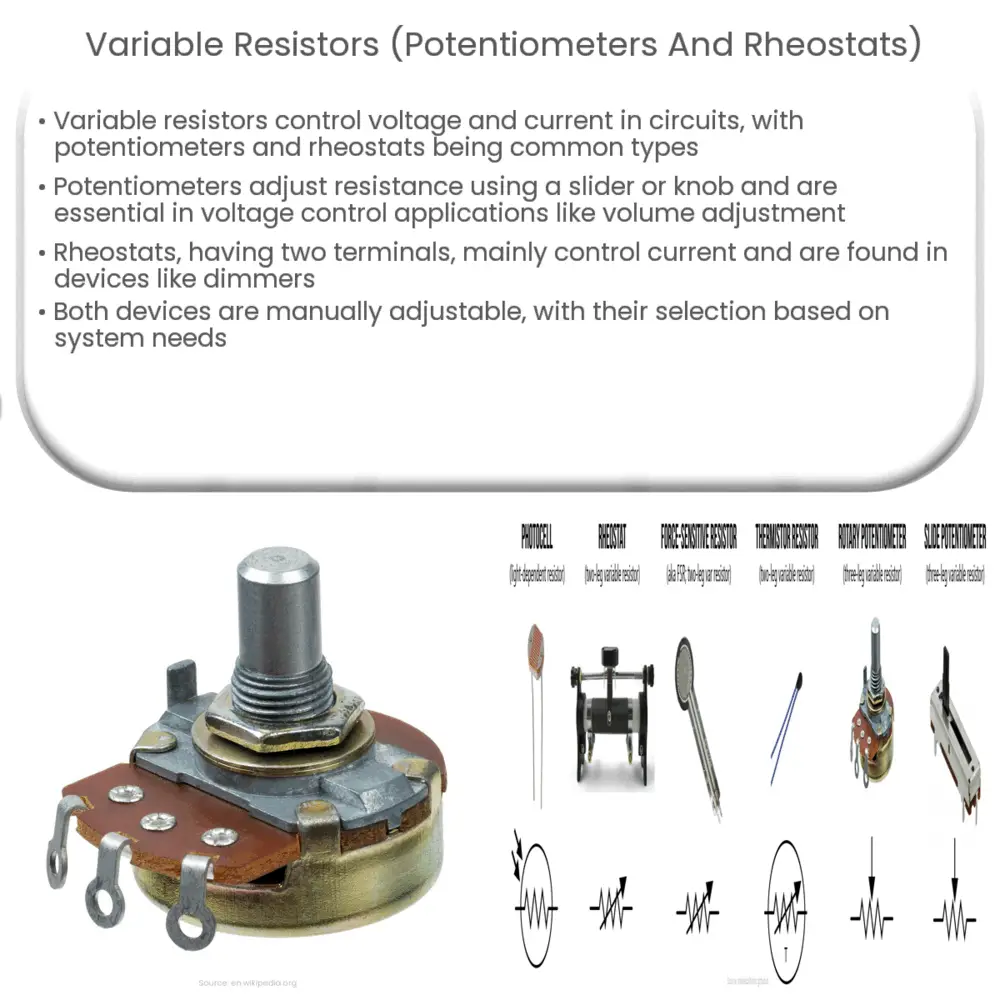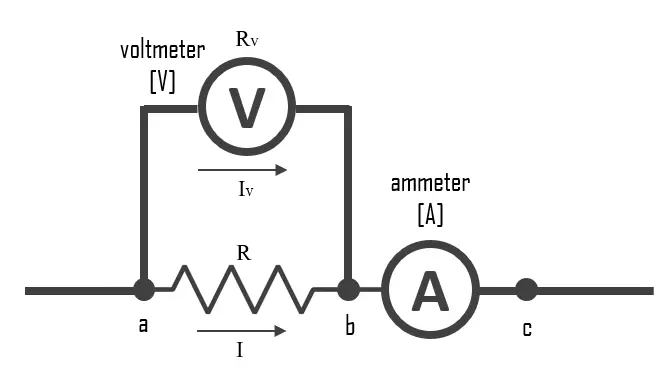Explore the basics of variable resistors, with a focus on potentiometers and rheostats, their construction, and uses in electronics.

Introduction to Variable Resistors
Variable resistors are a type of electronic component that plays a crucial role in controlling voltage and current flow in an electrical circuit. Among variable resistors, potentiometers and rheostats are two of the most commonly used types.
Potentiometers
A potentiometer, also known as a “pot”, is a three-terminal variable resistor. In these devices, the resistance can be adjusted by moving a slider or rotating a knob. They work by varying the length of the path through which the current flows.
- Construction: A potentiometer is typically constructed with a resistive element made from carbon or cermet, a metal contact slider that moves along the element, and a rotating or sliding mechanism that changes the position of the slider.
- Applications: They are widely used in applications such as volume control in audio equipment, as a voltage divider in power supply design, and in many other electronics and electrical applications where it is necessary to control voltage or current.
Rheostats
A rheostat, on the other hand, is a two-terminal variable resistor. It operates on the principle of Ohm’s law, which states that the current through a conductor between two points is directly proportional to the voltage across the two points.
- Construction: Rheostats are constructed with a resistive wire wound around an insulating ceramic core, a slider contact that moves over the wound wire, and a mechanism to change the position of the slider. They are larger and can dissipate more power than potentiometers.
- Applications: Rheostats find their use in applications where it is necessary to adjust current levels, such as in light dimmers, electric heaters, and motors.
It is worth noting that a potentiometer can be used as a rheostat by ignoring one of its terminals, while the reverse is not true because a rheostat has only two usable terminals.
Understanding the Differences and Similarities
The primary difference between potentiometers and rheostats lies in the number of terminals and their main function. A potentiometer, with three terminals, is primarily used for adjusting voltage. A rheostat, with two terminals, is primarily used for controlling current. However, both of them are based on the principle of variable resistance.
One important similarity is that they are both manually adjustable. The resistance in both potentiometers and rheostats can be changed by manually moving a sliding contact along a resistive element.
Selection and Usage
The selection between potentiometers and rheostats depends on the requirements of the electrical or electronic system. If the system requires voltage control, a potentiometer is usually a better choice. Conversely, if the system requires control over the amount of current, a rheostat would be a better option.
While using these devices, it’s important to consider the power rating. The power rating must be suitable for the application, or the device could overheat and fail. Moreover, a device’s resistance range should also be taken into account as it can significantly affect the performance of the system.
Conclusion
In conclusion, variable resistors like potentiometers and rheostats are crucial components in the realm of electronics and electrical systems. Their ability to manually control voltage and current by adjusting the resistance makes them invaluable in a vast array of applications. Understanding their construction, applications, and the principles on which they operate is essential for anyone involved in the design or maintenance of electrical and electronic systems. Despite the advancements in technology, the basic function of these components remains as relevant today as when they were first invented.



